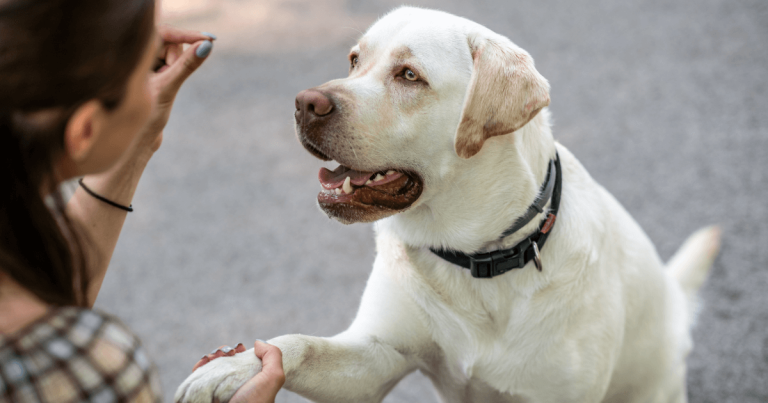What are bark collars | A Comprehensive Guide
In this comprehensive guide, you will learn what are bark collars, how they work, their different types, the pros, and cons of using them, factors to consider while using a no-bark collar, and how to use them responsibly.
Sounds good? Let’s dive right in….
What are Bark Collars?
Bark collars ( no bark or anti-bark collars) are regular collars with attached devices designed to discourage excessive barking in dogs by providing immediate and consistent responses to barking. This response may be in the form of an unpleasant smell, high-frequency sound, and vibration.

Purpose of anti-bark collars
Barking is a normal behavior of a dog. However, excessive barking sometimes discomforts you and your neighbors as well. If you’re struggling with this issue, bark collars might be a potential solution. This collar automatically senses the dog’s vocalizations and provides a quick response to barking.
How does a bark collar work?
When a dog bark, the sensor on the bark collar detects the barking behavior through vibration or sound. When a dog’s barking crosses the preset threshold level, no bark collar automatically triggers correction. This correction may be in the form of an unpleasant smell, vibrations, or high-frequency sound. These corrections vary according to the type of collar you are using for your dog. The intensity of corrections is adjustable according to the dog’s temperament and sensitivity level. The goal is to modify the behavior of a dog by redirecting its attention from barking and not punishing them.
Types of dog no-bark collars
There are the following types of anti-barking collars based on the response they show to barking behavior.
- Spray bark collar
When a dog barks, spray collars release the annoying spray which is either citronella or lemon. This unpleasant spray distracts the dog from barking. With time, the dog learns that this annoying smell is associated with barking. These collars are very safe and effective, especially for small dogs. The dog reduces the barking behavior to avoid this annoying smell.
- Electric bark collar
When a dog barks, the device on the collar either produces vibrations or low-level shock to distract the dog from barking. These collars run on battery.
- Static bark collar
When a dog barks, these collars give a low-level shock to the dog to disturb the dog while barking. These collars warn a dog before shock by offering a beeping noise.
- Vibration bark collar
When a dog barks, these collars produce vibration to disturb a dog during barking. This way is safer than static bark collars.
- Ultrasonic bark collar
When a dog barks, these collars emit high-frequency sound waves that disturb him while barking. With time, the dog learns that this annoying sound is related to barking. The dog reduces the barking to avoid this unpleasant sound. However, these sound waves are audible to humans. These collars run on a battery.
Pros and cons of no bark collars
Everything has positive and negative aspects, specifically when misused. Let’s dive into the advantages and disadvantages of using a no-barking collar.
Benefits:
- Effective for nuisance barking
- Efficient tool for training a dog
- Useful for establishing associations between a dog’s behavior and its possible consequences.
- Potential to address underlying behavioral problems, such as anxiety or territorial behavior.
Drawbacks:
- It may cause discomfort or stress to the dog, particularly with misuse.
- Risk of negative associations and fear development if not used appropriately.
- Limited suitability for all dogs, especially sensitive dogs or ones with underlying health concerns.
Choosing the Right Bark Collar:
If you want no bark collar on your dog, consult a veterinarian or certified dog trainer for personalized recommendations.
Quick story,
- Choose a collar that suits the size, sensitivity, and temperament of your dog.
- Opt for a humane option like vibration or citronella spray and analyze barking triggers.
- Your dog should be the top priority and these devices ensure a safe training experience for your furry friend.
- Choose a water-resistant collar.
- Buy collars from reputable brands as they have more accuracy.
- Look for a collar with adjustable settings for customized correction levels.
- Rechargeable devices are preferred to save your additional cost on replacing batteries.
- Look for an economical but accurate anti-bark collar. However, the budget may always not be the case. Anyhow, cheap devices are not worthy of solving problems.
How to Use Bark Collars Responsibly:
- First time, use no barking collar with the device off so that your dog used to collar with an attached device.
- Always begin with the gentlest setting and gradually increase it only if necessary.
- Never use a bark collar as a punishment tool.
- Combine bark collar use with positive reinforcement training for long-term success.
- Monitor your dog’s behavior and adjust accordingly.
- If the bark collar proves ineffective or raises ethical concerns, consider alternative training methods.
Training with Bark Collars
It is necessary to approach bark collar training with caution and ethical considerations. Seeking professional guidance either from veterinarians or certified dog trainers is crucial for assessing your dog’s needs, identifying the root cause of barking, and developing a customized training plan. Prioritize positive reinforcement techniques over bark collars, focusing on rewarding desired behaviors and addressing underlying issues like separation anxiety or boredom. If a bark collar is considered, opt for humane options and start with the gentlest settings under professional supervision. Remember, ethical and responsible training methods are useful for your dog’s well-being and long-term success.
Considerations for Anti-bark Collar:
While bark collars can be effective in some cases, there are factors to consider:
- Effectiveness: Their effectiveness can vary depending on the dog’s personality and the root cause of the barking.
- Ethical Concerns: Using them humanely and ethically is crucial, to avoiding discomfort or fear in the dog. Misuse can have negative consequences. It should not be used as a sole solution for behavioral problems.
Alternatives to anti-Bark Collars:
Exploring alternative training methods offers a holistic approach to address the root cause of barking. Here are some ways alternatives to these devices,
- Positive reinforcement technique.
- Reward-based learning behavior.
- Identify the root cause of barking and block those environmental triggers.
- Consult a professional or certified dog trainer.
Conclusion:
A bark collar is a valuable tool used to control the excessive barking of your furry friend. Different types of anti-bark collars are available in the market, choose one according to the temperament of your dog. This tool should be the part of overall training program after consulting with a professional. Don’t use it as a punishment tool as it can negatively impact your dog’s health.
FAQS
Shock collars vs bark collars
Shock collars are designed to correct a wide range of unwanted behavioral problems in dogs through electric stimulation while bark collars are specifically designed to discourage the excessive barking of a dog through smell, sound, or vibration.
Do bark collars hurt dogs?
Bark collars are safe and effective for nuisance barking. These collars work without providing any physical damage to a dog. If a bark collar is not used properly, it may frighten a dog.
Are bark collars humane?
Yes, if these collars are used properly. A study at Cornell University found that bark collars are more effective and safe for nuisance barking than electric collars.
Do bark collars work for dogs?
Bark collars are specially designed to address the nuisance barking of a dog. A study at Cornell University found that bark collars are effective in controlling the excessive barking of a dog.
Do bark collars work for whining?
Bark collars are designed to detect the vibrations of a dog’s vocal cords. Whining or howling involves different vocal cord vibrations as compared to barking. Most of the bark collars are not designed to detect these vibrations.





